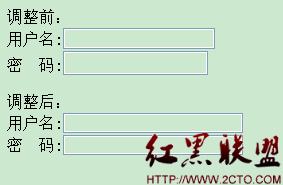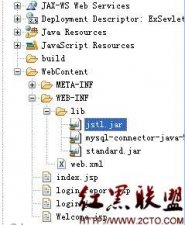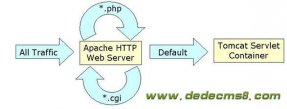JSTL实例:http://leaderbird.iteye.com/blog/275834
jstl实例参考
<%@ taglib prefix="c" uri="http://java.sun.com/jsp/jstl/core" isELignored="false"%>
<%@ page contentType="text/html; charset=gb2312" language="java" %>
<%@ page import="java.util.*,com.j2ee14.ch12.User"%>
<%
Collection users_c=new ArrayList();
for(int i=0;i<3;i++)
{
User user=new User();
user.setUserName("foo"+i);
user.setPassword("foo"+i);
users_c.add(user);
}
session.setAttribute("users",users_c);
%>
<html>
<head>
<title>JSTL:c:forEach的使用之一</title>
</head>
<body bgcolor="#FFFFFF"><center>
<h4>迭代某个collection中的元素。</h4>
<table border=1>
<tr><td>用户名</td><td>密码</td></tr>
<c:forEach var="users" items="${users}">
<tr>
<td><c:out value="${users.userName}"/></td>
<td><c:out value="${users.password}"/></td>
</tr>
</c:forEach>
</table>
</center></body>
</html>
------------------------------------------------------------
<%@ taglib prefix="c" uri="http://java.sun.com/jsp/jstl/core" %>
<%@ page contentType="text/html; charset=gb2312" language="java" %>
<html>
<head>
<tcounttle>JSTL:c:forEach的使用之二</tcounttle>
</head>
<body bgcolor="#FFFFFF"><center>
<h4>第二种迭代:50-60</h4>
<c:forEach var="count" begin="50" end="60">
<c:out value="${count}"/> **
</c:forEach>
<h4>第二种迭代:10 to 100,step=10</h4>
<c:forEach var="count" begin="10" end="100" step="10">
<c:out value="${count}"/>**
</c:forEach>
</center>
</body>
</html>
<%@ taglib prefix="c" uri="http://java.sun.com/jsp/jstl/core" %>
<%@ page contentType="text/html; charset=gb2312" language="java" %>
<html>
<head>
<title>JSTL:c:remove的使用</title>
</head>
<body bgcolor="#FFFFFF">
<c:set value="10000" var="maxUser" scope="application"/>
<c:set value="10" var="count" scope="session"/>
maxUser=<c:out value="${maxUser}"/><br>
count=<c:out value="${count}"/>
<hr>调用c:remove...
<c:remove var="maxUser" scope="application"/>
<c:remove var="count"/>
调用了c:remove后,参数值为:
maxUser=<c:out value="${maxUser}"/>,
count=<c:out value="${count}"/>,
</body>
</html>
<%@ taglib prefix="c" uri="http://java.sun.com/jsp/jstl/core" %>
<%@ page contentType="text/html; charset=gb2312" language="java" %>
<jsp:useBean id="user" class="com.j2ee14.ch12.User"/>
<html>
<head>
<title>JSTL:的使用c:set</title>
</head>
<body bgcolor="#FFFFFF">
<hr>
设置一个属性,然后输出它<br>
<c:set var="maxCount" value="100"/>
<c:out value="${maxCount}"/>
<hr>设置属性时,把它的值放在标签的body中。
<c:set var="password">
ksdjfxsdf234234
</c:set>
<c:out value="${password}"/>
<hr>设置javaBean的属性,然后输出这些属性值:
<c:set value="hellking" target="${user}" property="userName"/>
userName=<c:out value="${user.userName}"/>
<hr>设置属性,并且指定它们的范围,属性的默认范围是page。
<c:set value="20" var="maxIdelTime" scope="session"/>
<c:set value="next.jsp" var="nextPage" scope="page"/>
</body>
</html>









